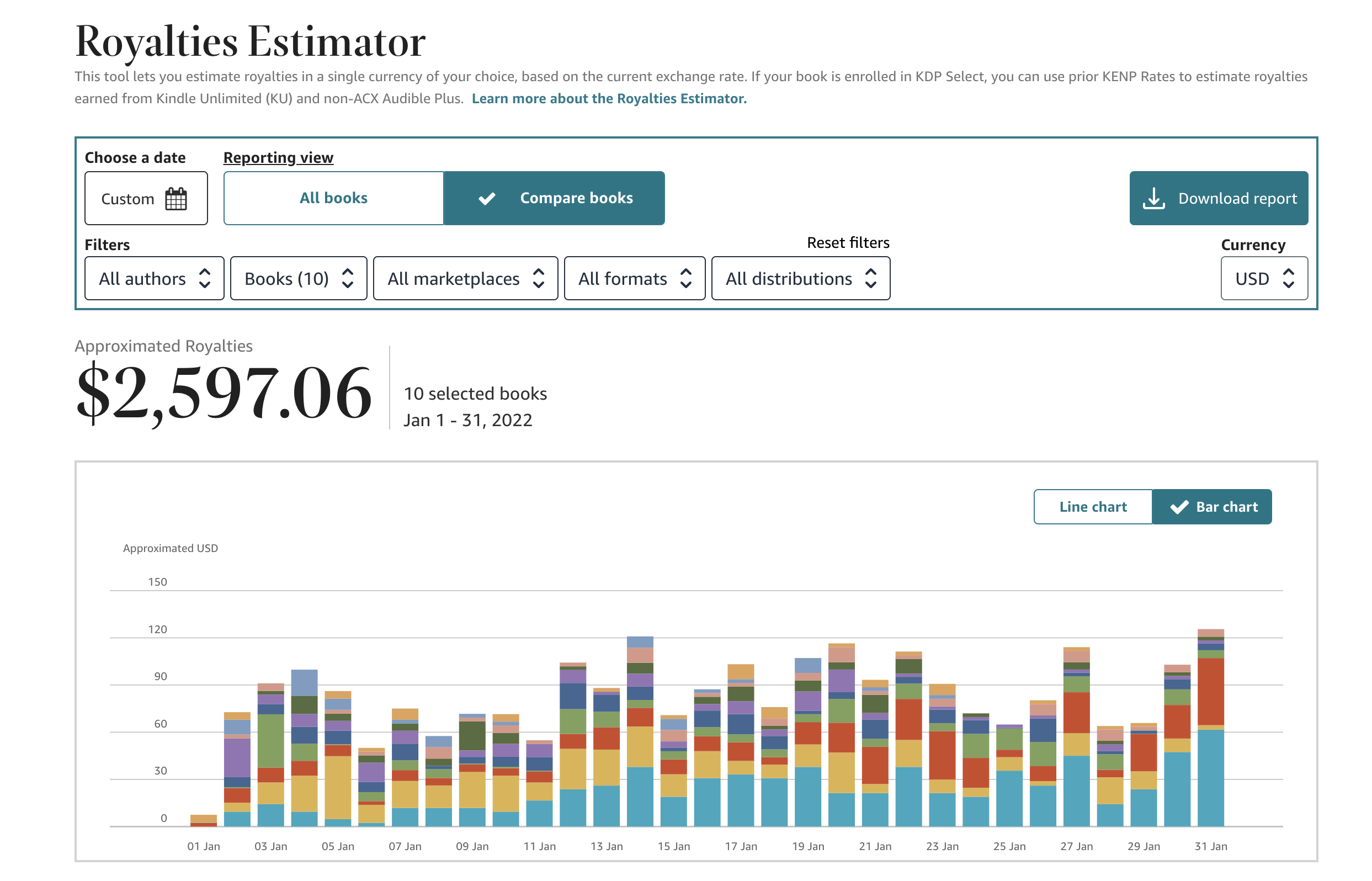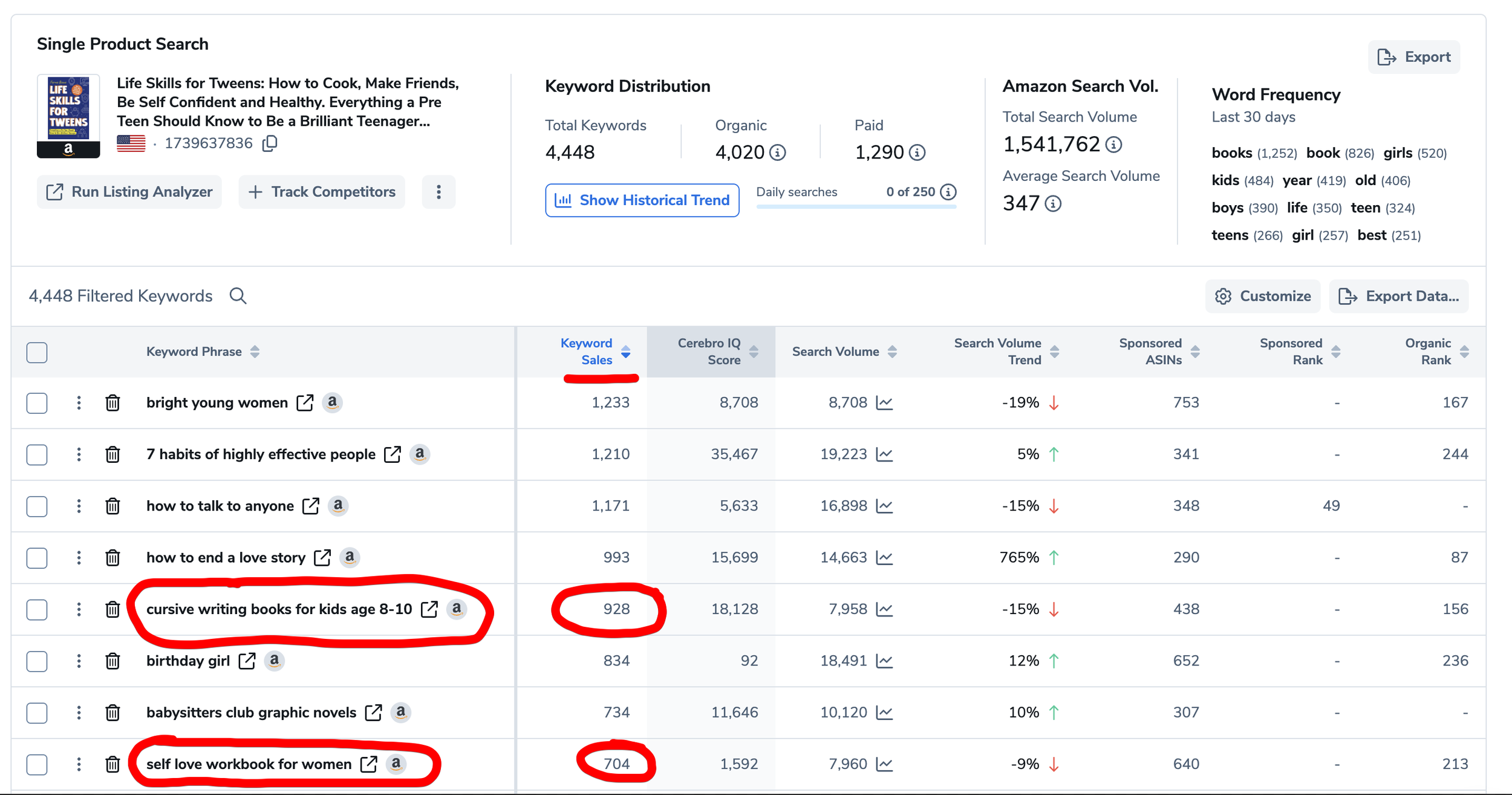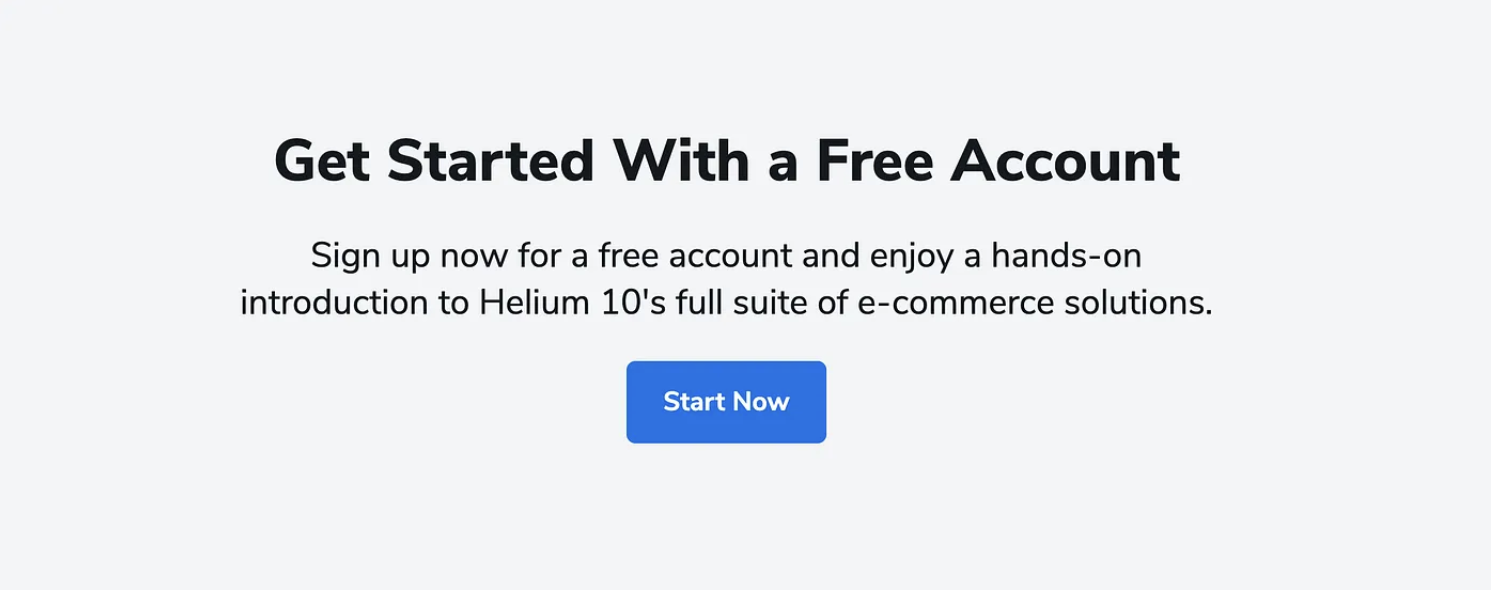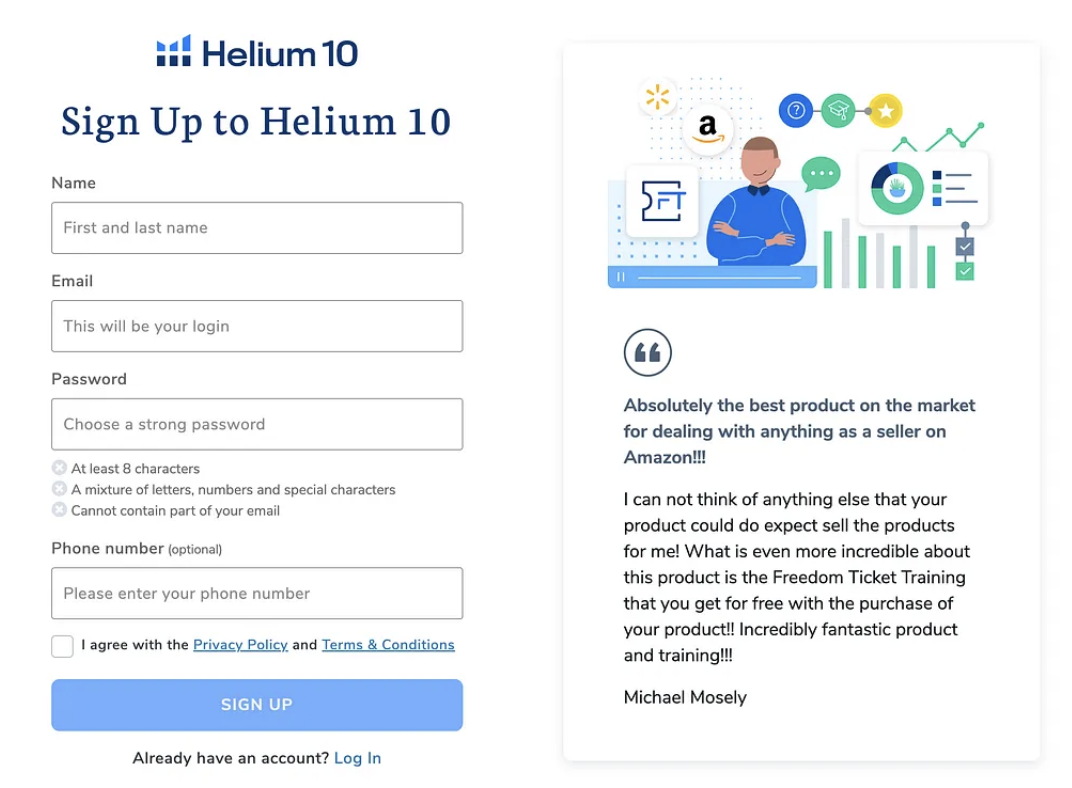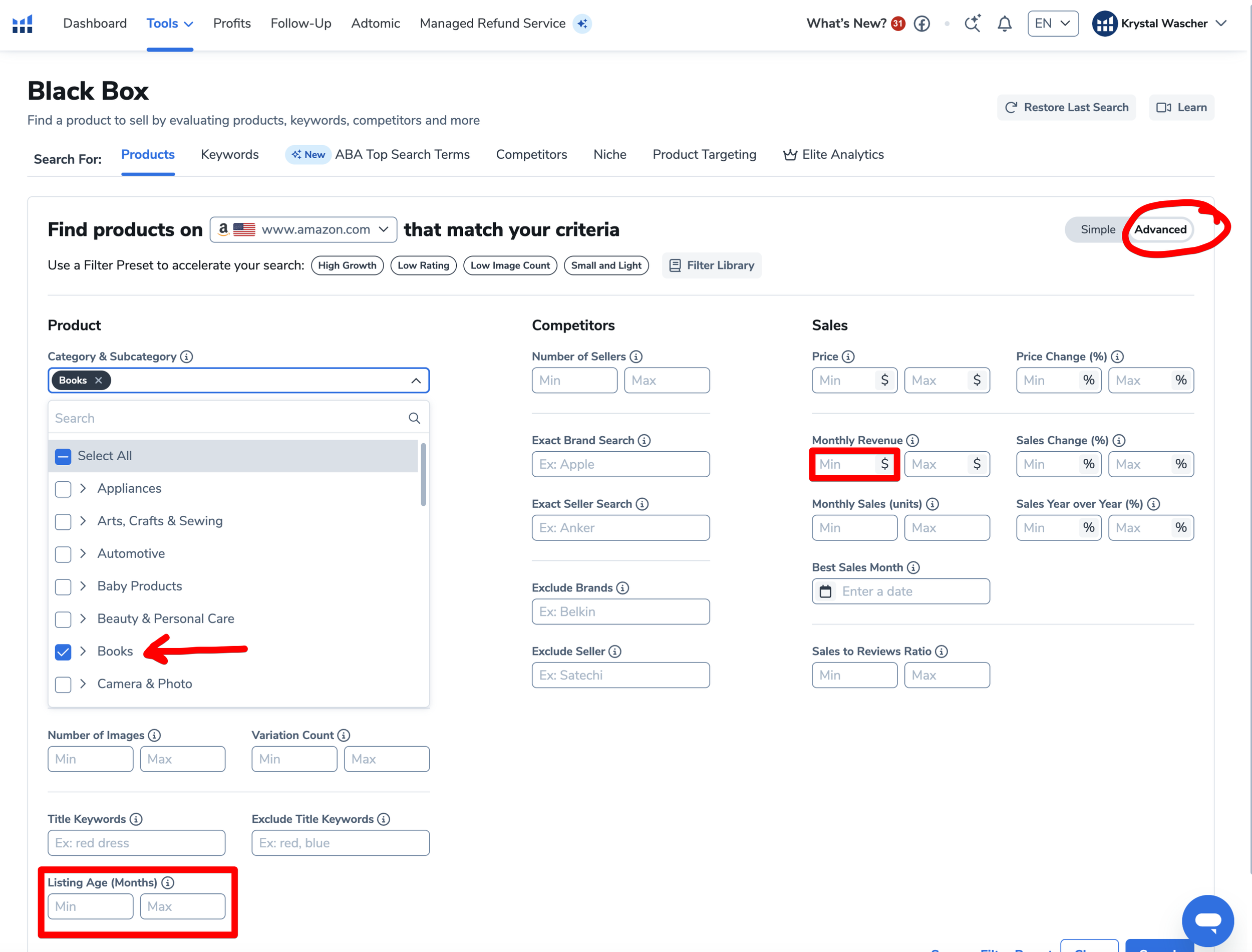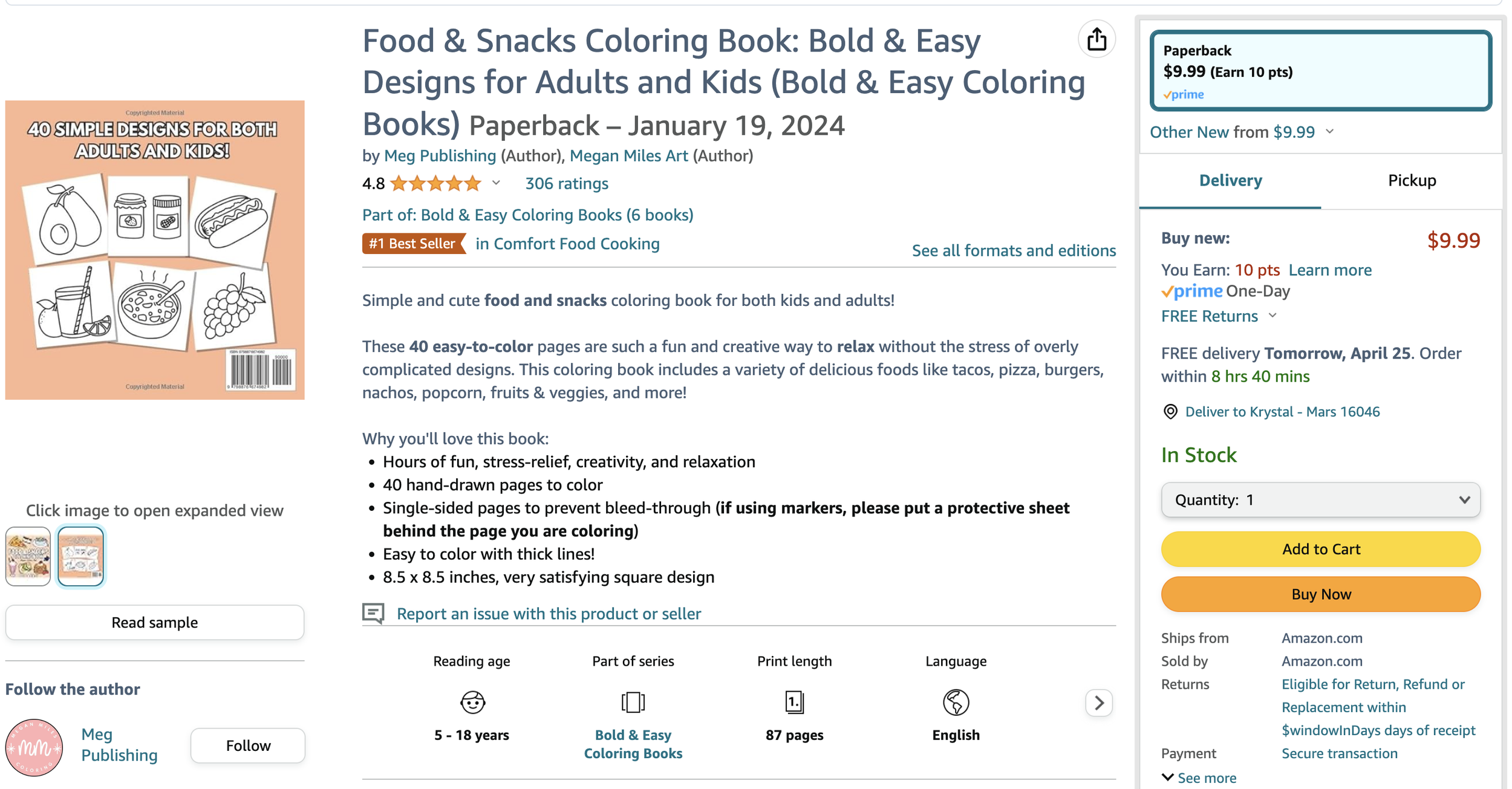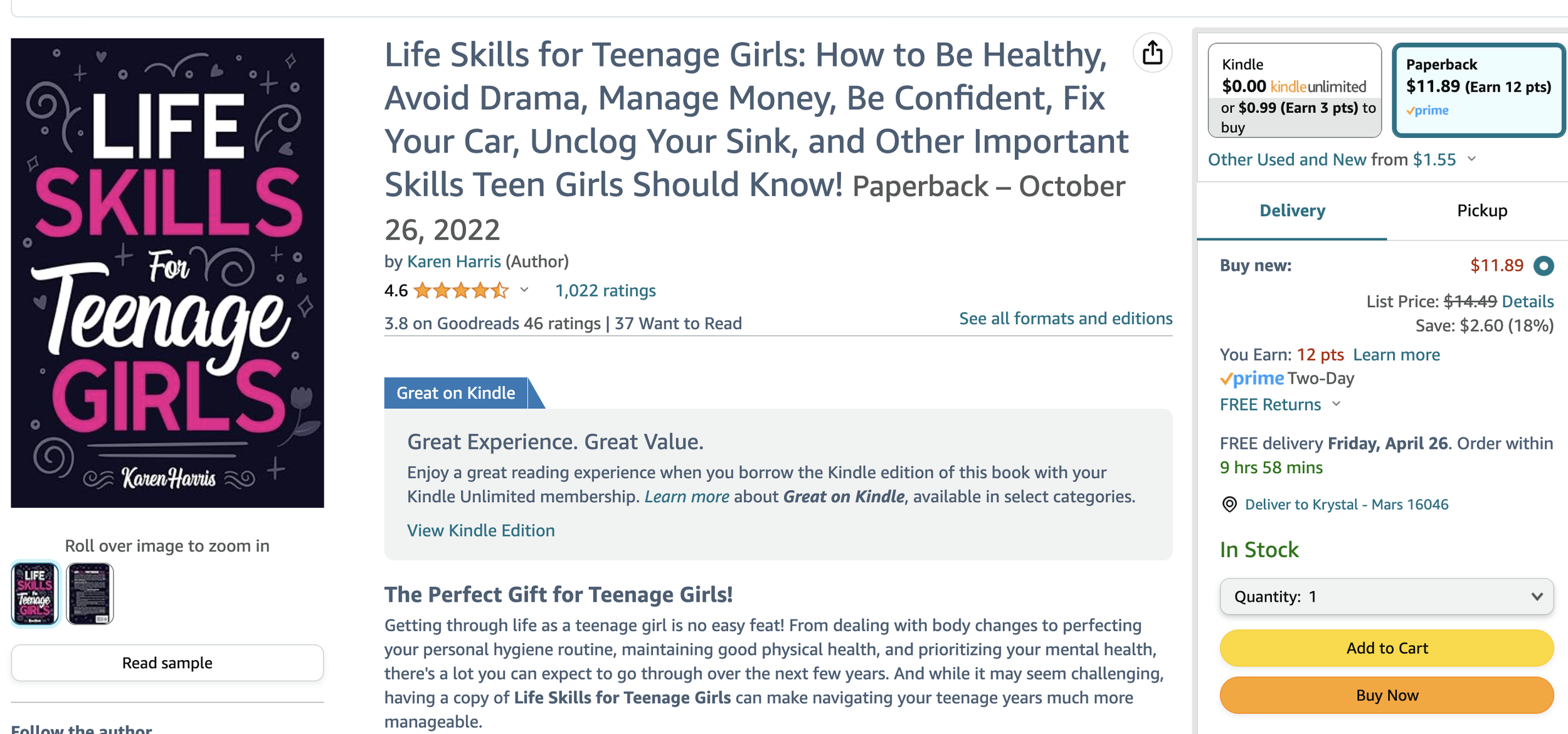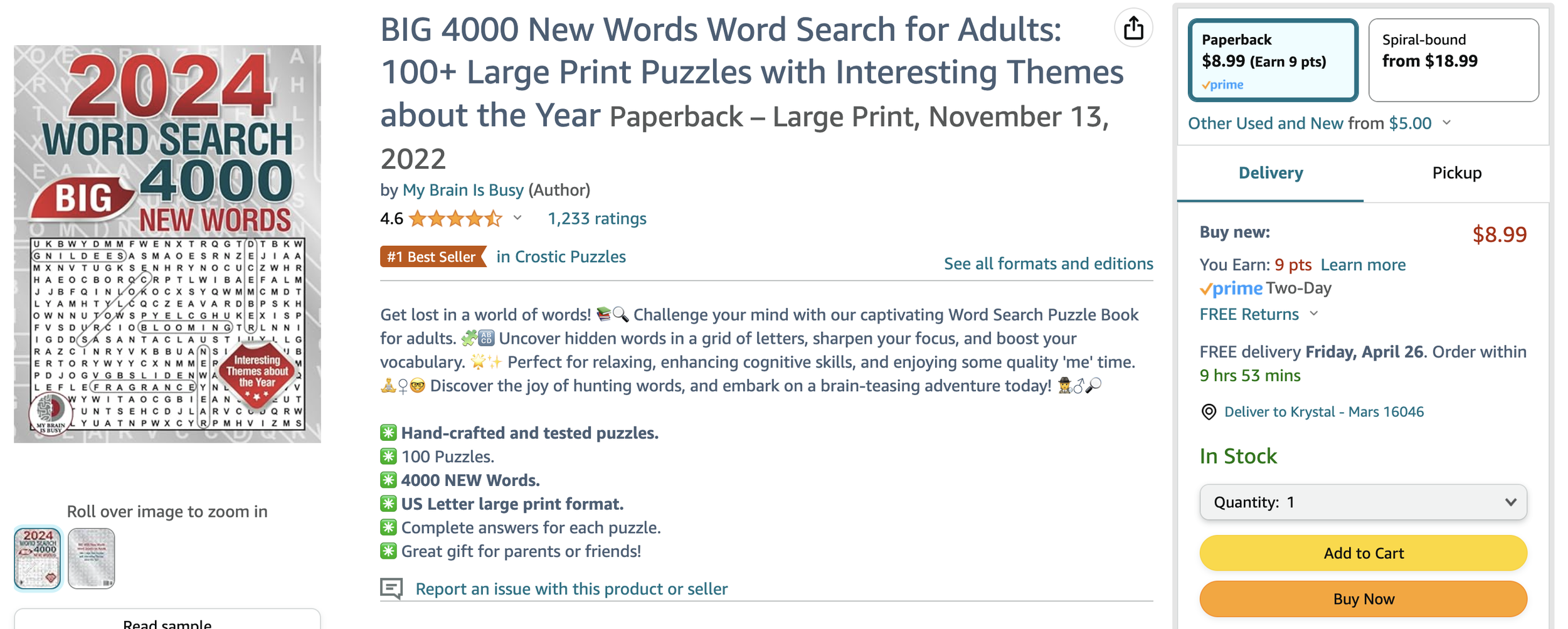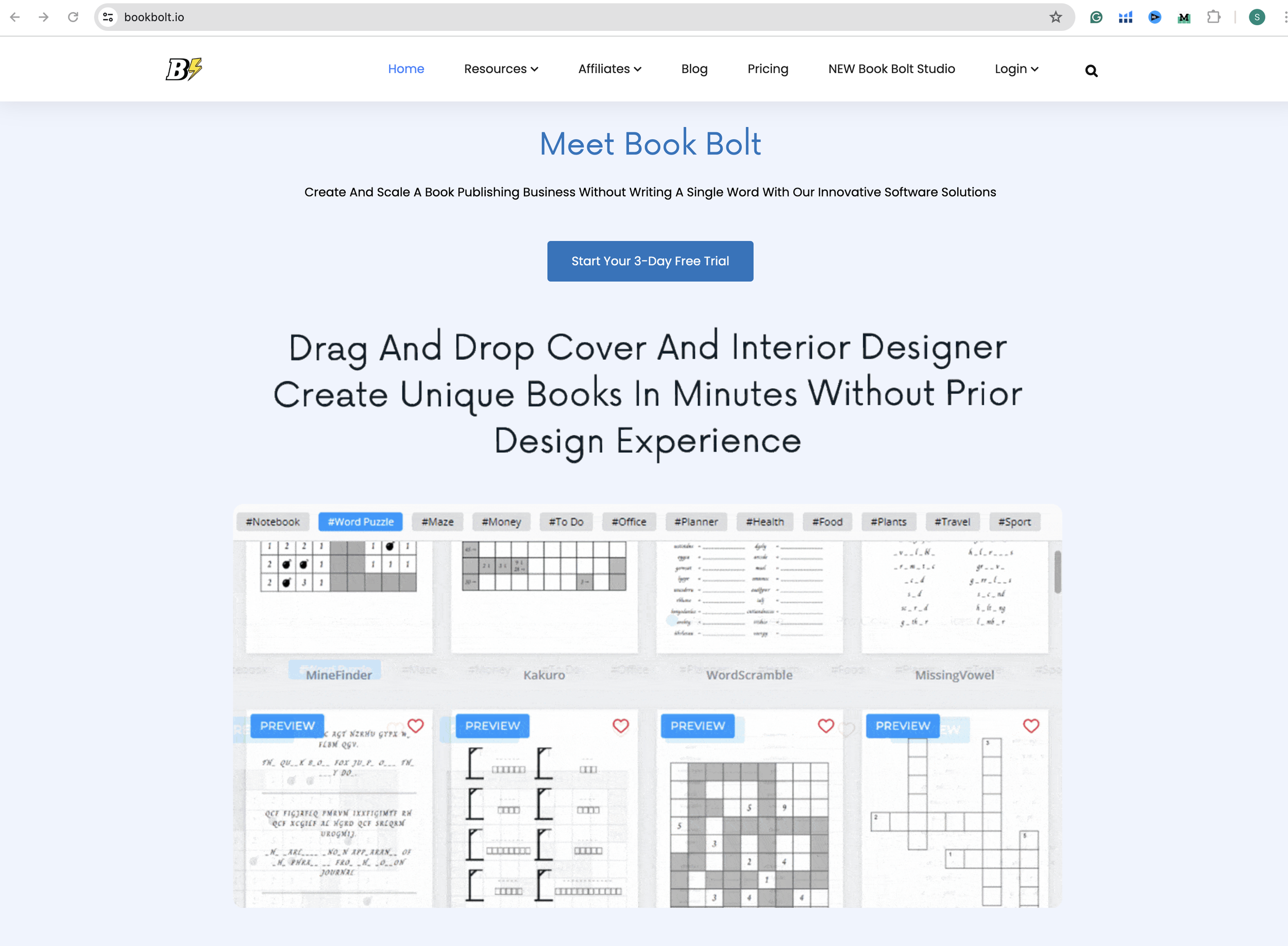How I Made $2,597 in My 2nd Month on Amazon KDP [Case Study + Tutorial]
I started narrating audiobooks in 2012 as a hobby.
By 2014, I had turned this passion into a full-time home-based business.
There was just ONE problem.
My pay was based on the length of each audiobook I produced.
So, the MOST I could earn was around $5,300 per month.
For some people, this might not sound too bad.
But after working long days for several years to meet deadlines, I was tired.
I desperately wanted to earn MORE while working LESS.
Around this time, I was working with a small publisher who had hired me to produce a series of books.
One day, he told me that he was earning around $30,000+ per month from the audiobooks I (and others) had narrated for him.
His goal was to scale that up to $50k per month by the end of the year.
MY JAW HIT THE FLOOR.
Here I was, doing most of the work and making a couple hundred dollars per book while he earned thousands in royalties each month.
That’s what happens when you work for someone else — you get a tiny sliver of the pie, and they get the lion’s share.
And so…
I Started Publishing in December 2021.
Before jumping in, I paid that publisher a hefty consulting fee to show me how he ran his business.
Here’s what he said:
There Are 4 Things You Must do:
Keyword research. This is the process of using a software tool to find profitable topics to build a book around.
Use a high-quality AI writing assistant to write and edit your books (do NOT use ChatGPT.)
Create (or purchase) a book cover that is both eye-catching and competitive with the other books in YOUR category. The cover is 90% of the sale.
Use Amazon's “auto-ads” for the first 30 days to rank your book for relevant keywords.
If you can do these four things, it’s just “wash, rinse, repeat,” he said.
The sky is the limit on how much you can earn.
Month 1
In my first month, I worked through these four steps and uploaded 2 short nonfiction books and 3 activity-style books to Amazon KDP.
I didn’t make much that first month because my books were very new and hadn’t started ranking for any keywords yet.
I expected that.
Month 2
By the end of the second month, I had uploaded a total of 10 books to KDP and earned $2,597 in royalties after spending just $53 on Amazon ads.
After deducting the cost of the keyword research tool, AI writing assistant, Amazon ads, and book covers that I ordered from Fiverr, my total profit for the month was $2,423.
I was elated.
I wasn’t expecting to get these results so quickly, but I wasn’t too surprised either since I had followed my mentor’s advice.
This was enough to validate the concept that self-publishing does work, and it motivated me to keep going.
Today, I have hundreds of books and audiobooks published across multiple sites, including:
Amazon KDP
Barnes & Noble Press
Audible
Google Play Books
Gumroad
YouTube (audiobooks)
Here’s EXACTLY What I Did
Step 1: Keyword Research
Ignore this at your own peril.
Did you know that you can reverse engineer the success of a book using data?
You don’t have to guess or take shots in the dark.
Most people don’t understand this.
They come up with a topic or title that they think other people will like, or worse, that they themselves like, and they run with it, hoping for a miracle.
This is why the majority of self-published authors NEVER make money with their books.
I want to show you a better way.
Each day, millions of people go to Amazon to search for books and audiobooks.
The main way customers find books on Amazon is through the search bar.
The words and phrases that people type into the search bar are called “keywords.”
Some keywords result in hundreds or even thousands of sales each month — these are what I call “profitable keywords.”
You can reverse engineer a profitable book by finding a profitable keyword and building a book (and/or audiobook) around it.
How to Find Profitable Keywords
I do this using a keyword research tool called Helium 10.
This is a very powerful tool that only serious Amazon publishers know about.
Most self-publishers have no clue that this tool exists.
But those who use it have a HUGE advantage over their competition because it shows you exactly which books are currently selling like crazy and which keywords are producing the most sales.
For example, the screenshot below is a report that I generated using Helium 10.
It shows me:
Every keyword a book is ranking for on Amazon (Keyword Phrase),
How many sales the keyword is generated in the last month (Keyword Sales),
How competitive the keyword is to rank for (Cerebro IQ Score)
How many people searched for the keyword in the last month (Search Volume),
Whether the keyword is trending up or down (Search Volume Trend),
How many products are running ads on the keyword (Sponsored ASINs)
Whether a specific book is running ads on the keyword (Sponsored Rank)
And the organic ranking position of the book for the keyword (Organic Rank)
With this information, you can easily find keywords to create books around that are almost guaranteed to result in sales.
For example, keywords like “cursive writing books for kids age 8-10” or “self-love workbook for women” would be ideal to build a book around.
At this point, you probably see the potential here, but it might feel a bit like drinking from a firehose, so let’s break this down from the beginning.
How to Start
The first thing you need to do is to find books that are already selling very well in niches that appeal to you. Then, you can look at the keywords they are ranking for to find the best ones to build your book around.
You can do this using a specific feature inside Helium 10 called “Black Box.”
You do not have to pay for Helium 10 to access the Black Box feature (but you will need a paid subscription if you want access to advanced keyword research data, as shown above.)
How to Use Helium 10 for FREE
To get started, click here.
This link will take you to the page where you can get your free account.
Next, scroll all the way down to the bottom of the page, where you’ll see this:
Click “Start Now” and create your free account.
Once you’ve set up your free account, log in and click on the “Tools” option at the top of the page.
Then, choose “Black Box” from the drop-down menu.
Next, make sure that you are in “Advanced” mode.
You should see a bunch of different filters that look like this:
How to Set the Filters to Find Books that are Super Profitable RIGHT NOW
Set the Product Category to “Books.”
Enter any “Minimum Revenue” amount that you like. I usually start at $10,000, but you can choose any amount. This will filter out low-performing books and only show you those that are earning more than the minimum you set.
You can enter a “Listing Age” range if you only want to see books that were published recently.
You can leave the rest of the field BLANK (unless you want to experiment with them.)
Click SEARCH, and you’ll get a report that looks like this:
This report tells you exactly how much each of these books made in the last 30 days.
The point of this exercise is to understand what is currently selling well on Amazon.
If you were to spend the next 10 minutes studying this list, you’d have a very good idea of the types of books that are in high demand right now.
Some of them might even surprise you.
For example, this simple “Food & Snacks” coloring book sold over 23,383 copies last month, bringing in over $233,596 in revenue.
Here’s another example —
This self-published book, “Life Skills for Teenage Girls,” sold 6,368 copies last month, generating over $75,142 in revenue.
Anyone with life experience could write a book like this.
I’ll give you one final example just to challenge your idea of what you think a “book” is—
This “Word Search Book for Adults” sold 10,819 copies last month and made over $97,262 in revenue.
This type of “book” doesn’t even require any writing.
You could make a similar book in under an hour using a low-cost software program called Book Bolt Studio.
I hope that your mind is starting to open up to what is possible here.
And if you happen to be one of those people thinking, “Why is she sharing this publically?”
It’s because there is more than enough opportunity here. It would take me 512 lifetimes to make books for every possible profitable keyword.
I understand what it’s like to work hard for years and still feel like you’re struggling to keep your head above water. So, if what I’ve learned can help just one person improve their life or situation, then that would make me very happy.
Mining for Profitable Keywords
As you’re looking through the “Black Box” list of books, be on the lookout for any topics that appeal to you.
Let me be clear — you are not looking for a book to “copy.”
If a book is currently generating a lot of sales, that means there is high demand for the topic.
What we are doing is looking for a proven topic that we can create our own unique book around.
Keyword Spy
Once you find a profitable book in a category you would like to publish in, the next step is to “spy” on the book’s keywords.
To do this, you’ll need to find the AISN number for the book you want to analyze.
This can be found on the book’s product page on Amazon or you can copy it from the Black Box report in Helium 10.
Once you’ve copied (or written down) the book’s ASIN number, go to the Cerebro tool inside Helium 10.
Type or paste the book’s ASIN number into the search bar and click “Get Keywords.”
This will create a report of every keyword that this book ranks for OR is running ads on.
Then, you can scroll through the list of keywords, paying close attention to the “Keyword Sales” column, and choose:
1) one PRIMARY keyword to include in your book’s main title.
2) one to three SECONDARY keywords to include in your book’s subtitle.
3) seven total keywords that you will enter into KDP when you set up your book listing (these can include your primary and secondary keywords.)
Once you have a list of 7 keywords, it’s time to start working on your book.
Step 2: Create Your Book
The process for creating your book will depend on whether you are creating a:
1) Traditional chapter book,
2) Word Search or Sudoku Puzzle book,
3) Low content book, or
4) Coloring book.
Creating a Traditional Chapter Book
For this, you’re first step is to create an outline for your book. You can do this manually (using your own creativity), or you can use an AI writing assistant to help you come up with ideas.
Personally, I prefer the Jasper AI Writing Assistant. In my opinion, it’s the best option for this kind of task.
I do NOT recommend using ChatGPT for book creation.


